How to stand out from the competition in organic search results: Look for better keywords.

First, let’s review some basic concepts.
- What is SEO? And why is it important?
- What is meant by "organic" search results?
- Is your website indexed by Google?
This video will help you understand white hat SEO (any practice that improves your search rankings in line with Google search engine guidelines), as well as something that you should always avoid: black hat SEO (tactics against search engine guidelines that may provoke being banned from Google).
This refers to unpaid search results, as opposed to paid advertisements. If you find the right keywords and create meaningful content to go with them, it can place you within the top ten results. And if you succeed at optimizing the queries for searches, it can set you as number one.
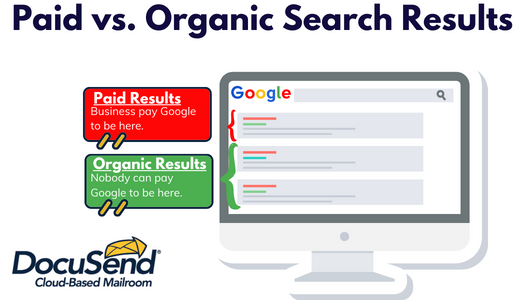
Google indexes your content based on system algorithms that take into account user demand and quality checks. Here is a short training video about the Google Search Console that explains how to check this.
The concepts of SEO are simple, but their implementation is complex. You need to continually improve your SEO techniques, since the rules constantly change.
Choosing the right keywords is the most important aspect of SEO, but I want to emphasize that this is not the only action that will create a good environment and place your business within the first positions on the search results. However, the main idea in this article is to help you use the right word combinations to gain a position in the top ten results with a small budget.
Steps to Follow to Find New and Relevant Keywords
- 1. Learn more about your niche:
- Talk with your current users to learn the most relevant phrases they use when describing your product or service. If you are just starting a business, investigate the most common terms your competitors use.
- Get into the online social media or forums talks: Get involved in your topic or niche’s online communities. Read the discussions and find out any pain points that are mentioned regarding your niche, then try to see if your business fits and fills their needs. Then go for it, filling in what the market is missing that people are needing.
- 2. Determine the goal: It’s crucial to define your goal because it will provide a route for your SEO tactics and plan.
- What makes your business stand out?
- What is your website about?
- Do you want to increase the number of subscribers (if you are a blogger) or do you want to increase visibility?
- 3. Write a list of topics related to your business:
- List topics that are related to your niche.
- Then create a list of subtopics; this list can be later converted into search phrases.
- What topics will your target audience search for on Google? Think about it… What would you search for?
- 4. Find evergreen keywords: These are essential for maintaining a consistent flow of organic traffic to your website, as they remain relevant and in demand over time. Here are several strategies to help you identify evergreen search phrases.
- Content Gap Analysis: Analyze your competitors' content to identify topics they consistently cover. If your competitors consistently produce content on specific subjects, it's likely they are evergreen.
- Answer Common Questions: Focus on how common questions within your niche are typically answered. People will always seek answers to fundamental questions or problems.
- Evergreen Topics: Some topics are inherently evergreen, such as health, finance, parenting, and personal development. Look for keywords within these broad categories.
- Historical Data: Review historical data from your website analytics to identify which keywords have consistently driven traffic to your site over time.
- User Forums and Q&A Sites: Explore platforms like Quora, Reddit, and industry-specific forums to find common questions and topics that have been discussed for years. These topics often make great evergreen keywords.
- Google Autocomplete and Related Searches: When you start to type, Google autocomplete will prompt you with some suggestions and add a section called “More to ask,” which can steer you toward some evergreen keywords.
- Content Update Potential: Look for existing content on your website that could be updated to make it evergreen. Adding fresh information or refining the content can help it remain relevant.
- Seasonal Trends: Be cautious of terms related to seasonal trends unless your goal is to capture seasonal traffic. Focus on those that are relevant year-round.
- Check Competitor Rankings: Check to see if your competitors have consistently ranked for specific keywords over an extended period. If they have, they may be evergreen.
- Use AI Tools (ChatGPT, Google Duet AI, Copy AI): AI-powered content generation tools can assist in identifying evergreen keywords by analyzing search trends and suggesting topics that align with long-term interests.
- 5. Try some free research tools:
- Keyword In:This tool combines everything together to provide you with a long list of potential queries.
- Chrome Extensions: Wordtracker Scout and Keywords Everywhere.
- Soovle will give you lots of ideas.
- 6. Identify long-tail keywords for your business:
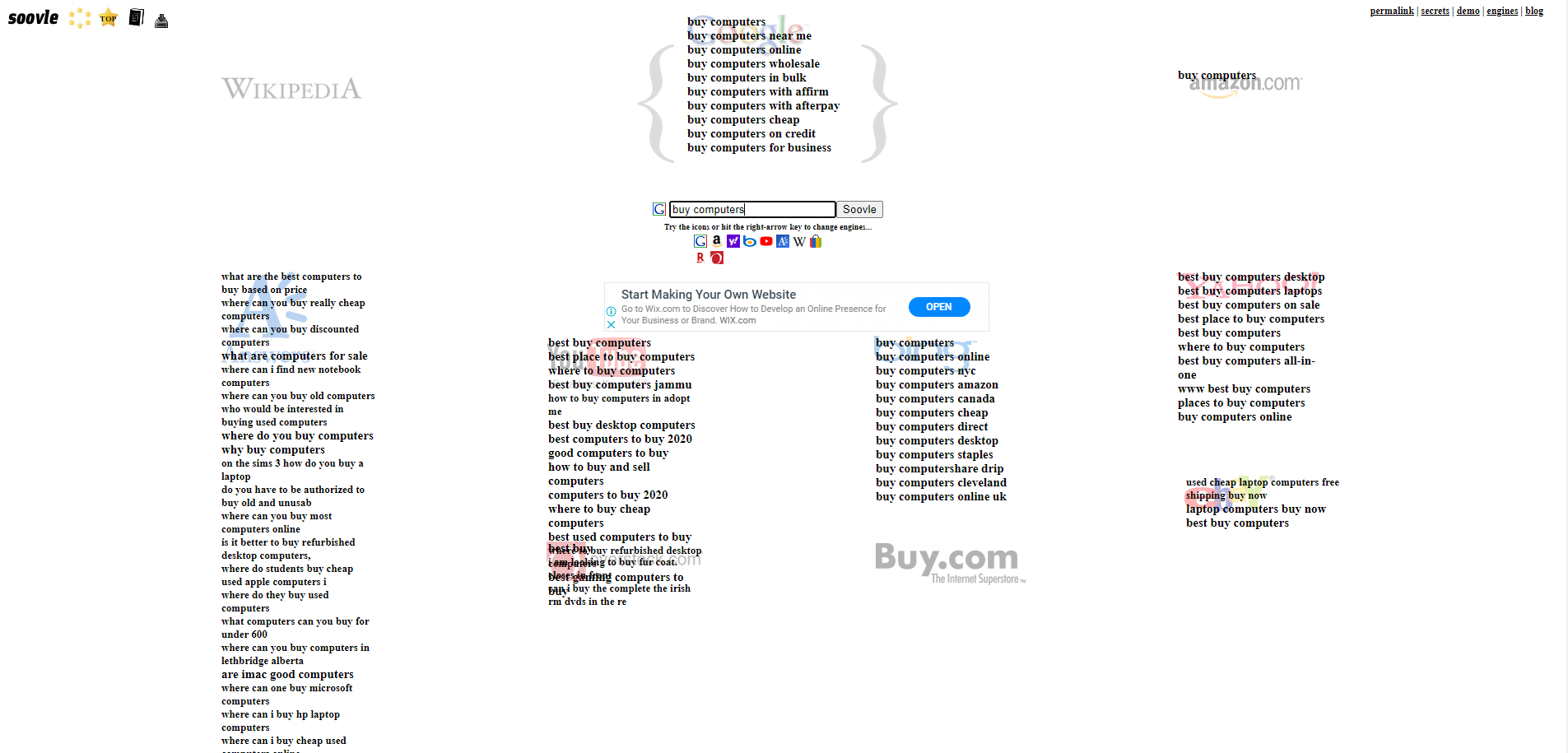
There are two main types: Broad Keywords (fat-head) and Detailed Keywords (long-tail).
Let´s suppose you have a company that sells computers. Investigate the terms people use most often when searching for a computer to buy.
We can start with this phrase: buy computers. That gives us about 629,000,000 results in the SERPs (Search Engine Results Pages). Notice that this number refers to the websites that are competing for this fat-head keyword.
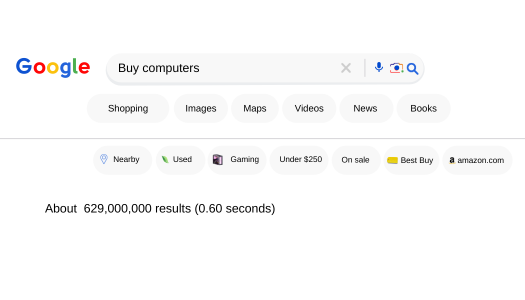
Google always tries to help you. It will display the most common questions people have that are related to the keyword searched, such as in the image below.
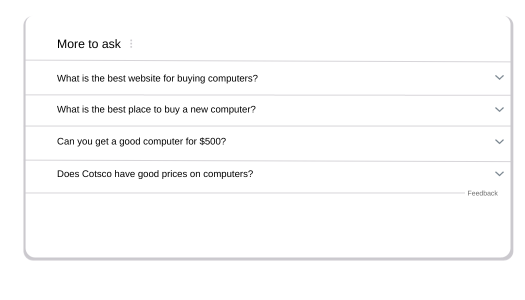
These questions will give you lots of ideas for long-tail keywords for your business.
Focus on Highly Relevant, Low-Competition Keywords
If the number of search results is super high, as in our example, try to find a more specific keyword related to your niche. I suggest that you refine your first attempt to a long-tail keyword with less competition and higher opportunities for ranking faster. More specific phrases make it easier to craft personalized content that is laser focused on search intent. (More on content later in this article.)
“Buy computers” is a generic phrase, so it is difficult for you to know if the searcher is really looking for a place that sells computers or if they need ideas on what computer is good to buy or what kind of computer they need that fits with their job or… well, you get the picture—there are any number of things people can be thinking when searching using such a generic keyword.
The goal with keywords is to find ones one that best fit your niche and at the same time help your users find what they are really looking for. This means that if you are a business dedicated to a specific kind of computer, you will need to look for even more specific keywords, and that almost always helps you to find less competitive phrases.
Less competition does not mean less authoritative keywords. It is like looking in the empty spaces your competition has not seen and gaining that keyword opportunity to show up to your potential customers in the SERPs.
Longer phrases need to have good search volumes and trends, which will let you know if the keyword you are targeting has a good number of people looking for that phrase and if it will eventually lead them to your website.
“But wait,” you may say, “you’ve said that a huge number is not good—the search term is too generic. So, what’s a good volume?”
I agree, it seems confusing, right? I will give you some other metrics that you will need to take into account when choosing a keyword. There is not a specific number that I can share with you. However, these metrics, which you can obtain using an SEO tool like MOZ, will guide you tremendously to define the best keywords to use.
- Monthly Volume: This refers to the demand of the keyword. Higher monthly volume means a better keyword. Look for keywords with at least 100 searches per month—over 500 is best.
- Difficulty: The lower the better. The lower the number, the easier it is to rank for the keyword on the first SERP. Here is a list of difficulty numbers that may give you an idea of what you can try.
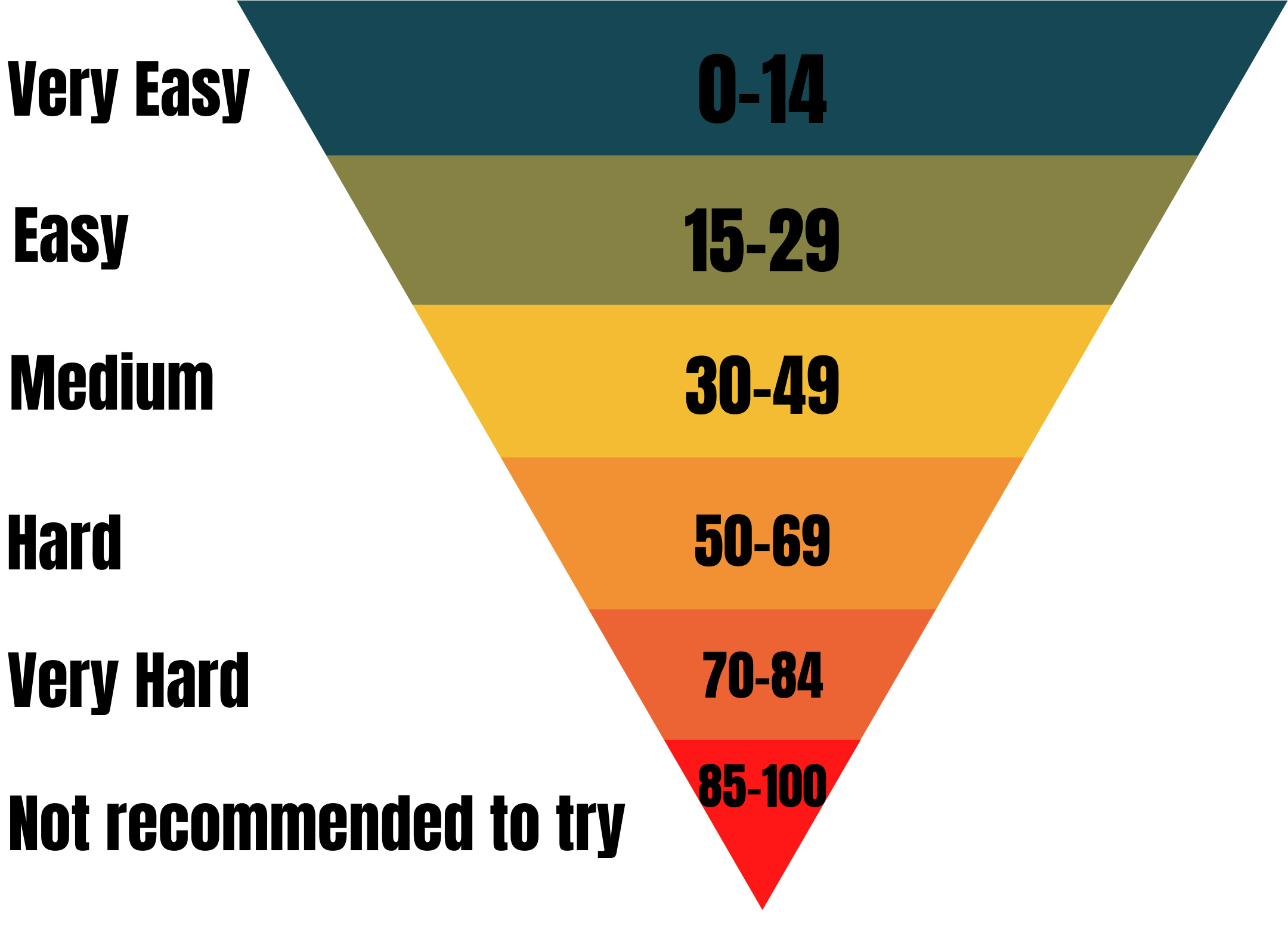
If you find a keyword that has a high search volume and low difficulty value, it is a good keyword to try. Note: This is my opinion based on the most common tests I tried. It is your decision if you want to try the more difficult numbers. The reason I do not recommend the higher difficulty number here is that it will take a lot of advertising resources to gain that keyword.
I used the MOZ tool to get these numbers for “buy computers.” As you can see below, the monthly volume is low, and the level of difficulty is high. Not worth trying in my opinion.
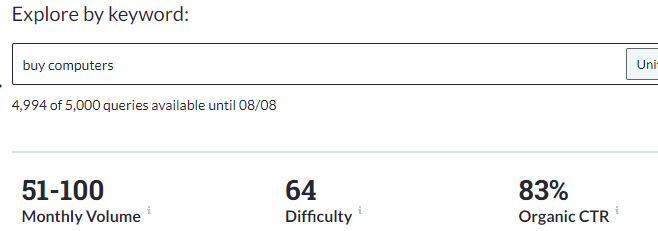
There are those who might like to try this keyword in ads because the click-through rate (CTR) is high. The click-through rate is the percentage of total ad views that result in clicks. The CTR helps determine both your ad rank and your cost per click. So it is up to you whether you want to give this a shot.
The following Google tools are very helpful for getting suggestions and checking the trends. Both can give you a lot of good ideas:
- Google Keyword Planner.
- Google Trends: Google Trends is an online tool that helps you discover trends in people’s search behavior within Google Search, Google News, Google Images, Google Shopping and YouTube. It’s super useful when looking for queries to try.
Now Get Writing
However, you’re not done yet.
Once you find the right phrases, you will need to write content on your website related to them. If you just add the search terms, but the content is not related, you will have the opposite outcome: Google will send your website to the bottom of the SERPs.
I always suggest reinforcing the keywords with an article or a specific online page that targets the chosen terms. If your content does not reinforce your keyword, it will hardly work. In the following link you will find a brief explanation about how a blog helps you boost your online presence:
How to Bring More People to Your Business’s Website.
The final thing that maybe you are wondering is, where should I place the selected keyword?
- Inside the HTML: in title tags, descriptions and alt texts.
- In article headlines and in subheads with variations of the keyword.
- In the first 25 words of your page. Bold keyword(s) at least once on your page to call readers’ attention to them; if the user stays on your page for a reasonable time, you will call the search engine spiders’ attention too. (A spider is a crawler used by a search engine to browse and index content.)
AVOID: Keyword stuffing: Repeating the same word or phrase so often that it sounds unnatural. In the comments section, please share some other techniques you use to find relevant keywords for your site.
Bonus – How to take advantage of time while you are at home:
How business owners and entrepreneurs can get certificates from Google courses about digital marketing and analytics; also learn about SEO from prestigious companies without leaving home and for FREE!

